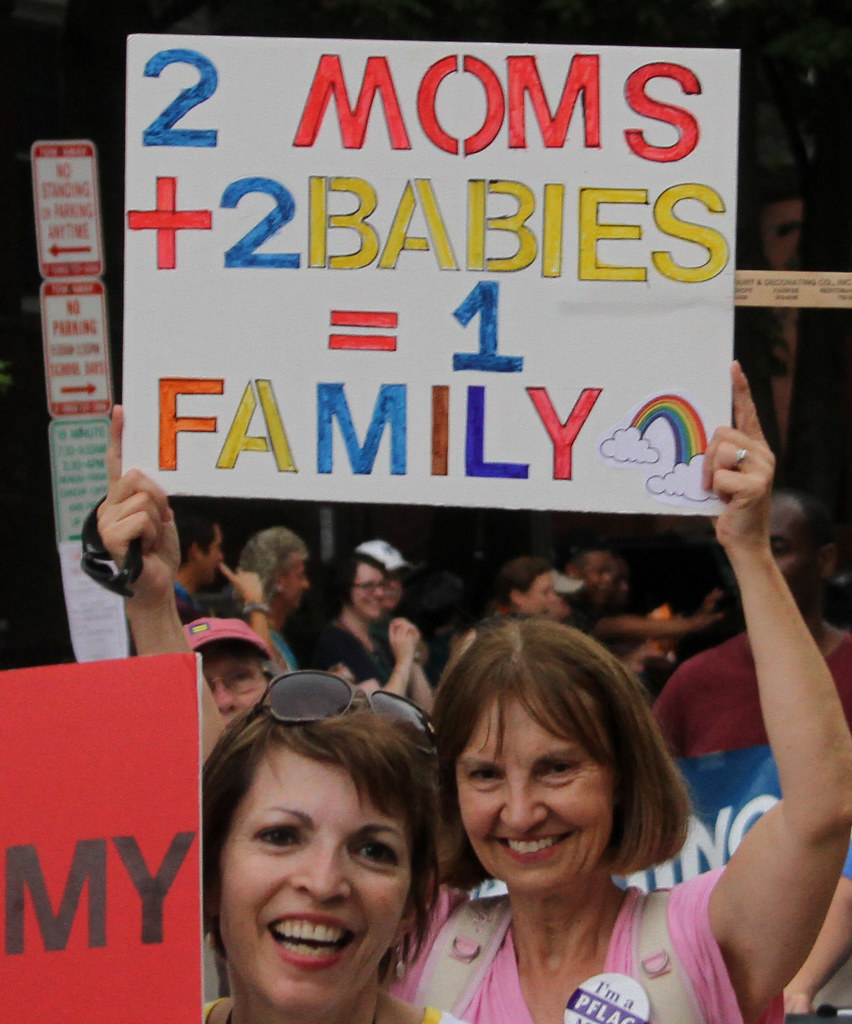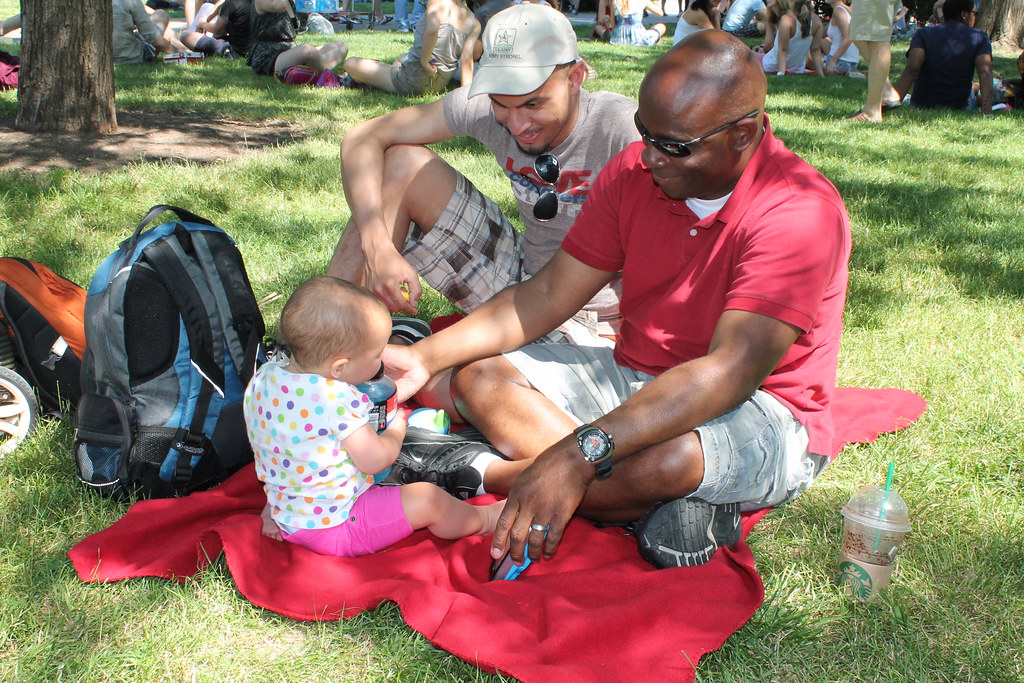Alternative families are changing with the times, and the law needs to keep up.
June is Pride Month, and as we celebrate every color of the rainbow (and then some!), it’s also a fraught time in our nation’s history. A Supreme Court so skewed to the Right that it’s sliding back to the 1850s is poised to knock out women’s bodily autonomy and, indirectly thereby, also everything that it underpins, such as workforce participation and the ability to make financial decisions without a man signing off on them. That same court seems inclined to tear down other rights that Americans enjoy, such as the ability to buy contraceptives, marry a different-race or same-gender partner, and for those same-gender families to adopt children. Despite what, by all appearances, is an attempt to standardize families to the Leave it to Beaver model, they will find that alternative families have pride too!
The most common argument for male-led heterosexual nuclear families is that any other configuration “harms children.” Plenty of things harm children, such as getting shot in school, molested in church, not having adequate nutrition and medical care, and living in polluted neighborhoods, but alternative families don’t rank high on the list.
A 2017 study by the University of Amsterdam found no difference in the well-being of children raised by single mothers and those from standard two-parent homes. The grown-up children of single mothers were found to be no better or worse in terms of the relationships they form with their own children later. Having a strong support system comprised of relatives, friends, neighbors and teachers greatly helped single mothers, but that merely underlines the fact that the individuals in a child’s life don’t need to be heterosexual parents to be supportive. What’s important are the relationships, and it can be better to have a loving, single parent than a troubled home with two.

Less common are three-parent families. Whether through divorce and remarriage, a birth mother and adoptive parents, a sperm donor and a lesbian couple, married heterosexuals and their ace friend, poly triads, or some other configuration, the number of three-parent alternative families is slowly increasing. Currently, parental rights for three individuals are legal in Maine, Washington, California, Rhode Island and Vermont, but other states have also officially recognized some uniquely blended families, such as when a single mother in Alaska grew ill and arranged for another couple to adopt her child while she also retained parental rights. Louisiana also has a thirty year old statute that allows two men to be declared fathers of a child if a married woman’s child is conceived adulterously.
With the enormous death and disablement toll taken by the ongoing pandemic, far too many children have had their parents and caregivers taken from them. Often, extended family members step up to make sure someone supports and cares for the kids left behind. Before the pandemic, about 2.6 million American children lived in “grandfamilies,” a term that the nonprofit group Generations United uses to describe alternative families led by grandparents or other relatives, due to circumstances such as military deployment, substance abuse, incarceration, death or disability. An estimated 200,000 more kids have joined them after losing parents to COVID, with many more receiving parent-like support from a grandparent after one parent died. While neither the grandparents nor the kids may have been ready for such an arrangement, families can and do evolve.
What defines a family has even affected the housing crisis. Although many cities need more affordable housing, developers find it more profitable to build large, expensive single family homes. Speculators then step in to compromise and profit by subdividing too-large homes into bite-size, marginally more affordable rental units. This leads to NIMBY residents who enact ordinances to prevent the rental riffraff from moving in by defining a “family” as fewer than three unrelated adults living together.
What happens, though, when alternative families can’t find housing, like the case in Shawnee, KS, where a married couple, their two grown children, and one son’s girlfriend couldn’t occupy a single family home together? Or an older example from Hartford, CT, where an extended chosen family consisting of eight adults and three kids bought a ten bedroom mansion to live in, when the city sent them a cease-and-desist letter? In both cases, ordinances changed to allow “Golden Girls” type alternative families to live together, but not without a legal fight.
Americans are changing – like it or not – and so are their family structures. Ordinances, zoning codes, and laws need to keep up. Even the 1850s had alternative families, remixed when spouses died and survivors remarried for the children, enslaved families were broken apart and sold, or later, when elderly veterans married much younger women, trading a secure pension for end-of-life care. Those who would take us back to Biblical times would do well to remember that families could consist of a man, his wives and concubines, his children and servants. The nuclear one-man, one-woman, 2.5 kids family is an artifact from a particular era. And if not living in one is deemed harmful for children, then those who judge them harshly would be advised to stop making life even harder for those who don’t fit in their patriarchal, cookie-cutter mold.
Related: They’re Coming for Marriage Equality Next


Join the conversation!